6 min read
Every single sign you're in MQL Hell
Have you ever paid the high price for a batch of "BANT-qualified" leads for your sales team and instead of seeing...

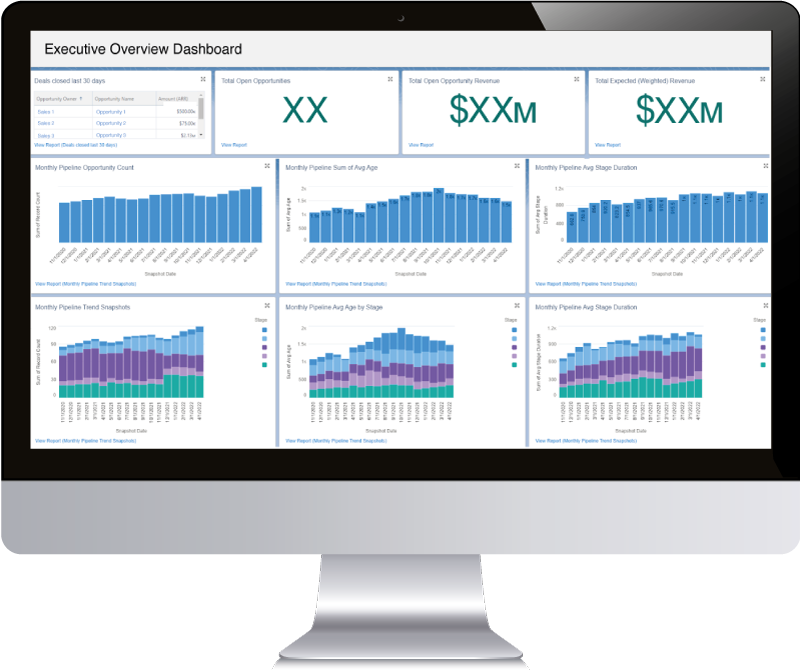
In their seventh year helping hospitals and health systems process complex claims, Aspirion came to us needing a CRM infrastructure to support ambitious growth goals. Through an engagement that lasted three years, we became an extension of their team to take them from spreadsheets to a fully integrated sales and marketing system.

Funded by private equity, Aspirion was engaged in an M&A strategy to accelerate their market share growth.
Beginning with only three sales users and no marketing team, they needed a fast, scalable growth platform to support their growing teams and customer base.

Aspirion needed a CRM that would grow with them, and guidance to implement it the right way.

Organic Endeavors helped Aspirion set up and fine tune their revenue operations infrastructure.
Aspirion Health Resources was founded in 2012 as a specialty revenue cycle management vendor focused on helping hospitals and health systems process complex healthcare insurance claims.
In May of 2018, Aquiline Capital Partners, a private equity firm, acquired Aspirion to use as the fulcrum of their complex healthcare claim business. Because of their plans to grow both organically and by acquisition, they needed a more robust CRM platform that would support a growing customer base and the corresponding sales and marketing teams needed to service them.
A year after the acquisition, once the new executive team was in place, Aspirion engaged Organic Endeavors to set up, deploy and administer their chosen CRM platform - SalesForce - and advise on scaling the platform moving forward.
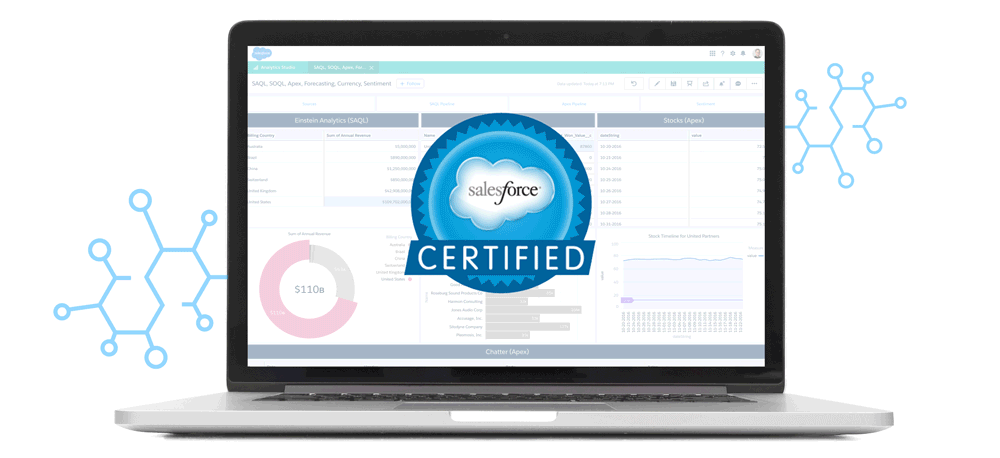
Aspirion had already narrowed down their options for a new CRM to either HubSpot or Salesforce. They wanted to ensure they had objective advice on the trade-offs between each platform, and what the strengths and weaknesses might be.
Working with Organic Endeavors helped them understand the key trade-offs from an objective perspective. This trusted, neutral, third party helped them confirm the decision to go with Salesforce.
While Aspirion initially considered doing the implementation themselves with the assistance of Salesforce professional services, they decided that having a dedicated and experienced consultant would not only help them avoid common mistakes and onboard faster, but also assist with data migration, integration, and user training that weren’t offered by Salesforce.
Organic Endeavors quickly laid out a 30 day implementation timeline that would accelerate their timeline and allow them to meet their target launch date.
Allen’s a great person to work with - he invested time in learning and understanding our business, so he was able to relate to the sometimes complicated data management policies and privacy standards in our industry.
Because they were starting fresh and planning to grow quickly, Aspirion wanted a very clean and scalable way to organize all their prospect and customer data in one place. Organic Endeavors used their “5 S” approach to onboarding which gave them a clean data structure to build on.
There wasn’t a marketing team or a lead generation program, so Organic Endeavors focused on tracking the main sources of new business which was primarily relationship building events for sales people and referrals.
All HubSpot originated sources were aggregated into one “Inbound Marketing” category using a workflow. They also wanted a way to track new accounts and customers that were acquired, so a custom field was added to track the acquisition sources as well.
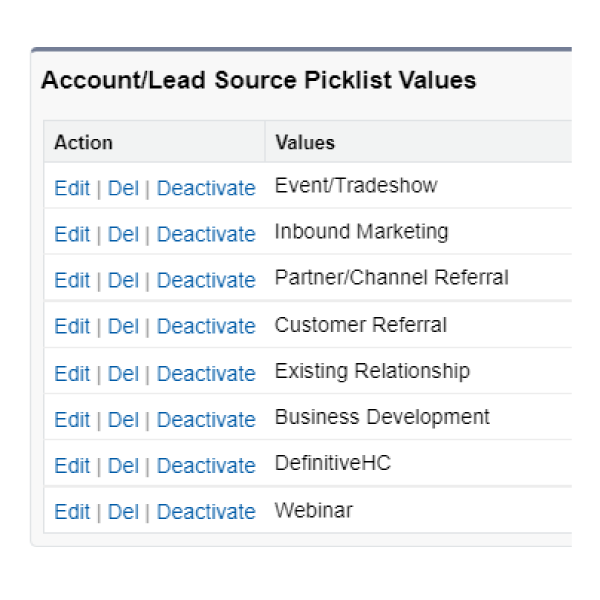
Hospitals and Hospital Systems were filtered out based on Net Patient Revenue (NPR), the number of staffed beds and the type of Hospital to arrive at a very targeted list of approximately 1,600 Hospital Accounts. Further, the Contacts were filtered based on the “DHC Functional Group” and then organized into targeted personas of whether they were financially-focused executives or not.
This consolidated their most insightful customer data into a quick "at a glance" format that the Sales users could quickly assess and act on.

Aspirion wanted to efficiently track the stages of their opportunity pipeline across all of their acquired lines of business, and each opportunity involved the negotiation of a contract.
Organic Endeavors worked with them to map out a relatively simple six-stage “Sales Path” in Salesforce that would allow them to better track and forecast their sales revenue realization.
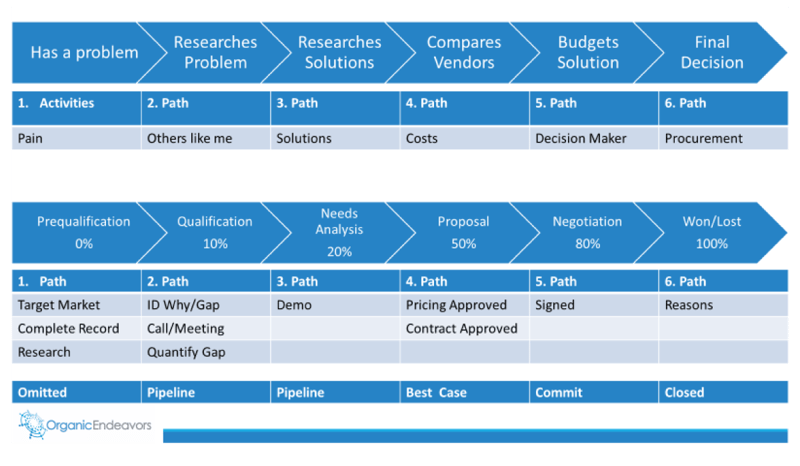
Since Aspirion wasn’t focused on traditional inbound marketing tactics like outbound email or content creation, there wasn’t as big of a need for Lead Scoring. However, the Salesforce Users still wanted to be able to see which Contacts were interacting with some of the communications that were being used.
Organic Endeavors mapped custom fields from HubSpot with custom contact list views into Salesforce so that the Sales team could easily see and prioritize which Contacts were the most active in opening any Marketing emails that had been sent.
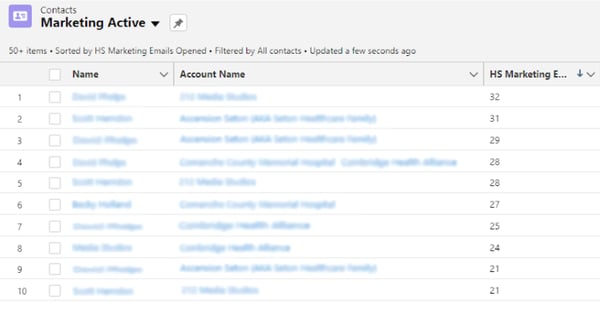
The final part of the 5 S process is setting up the sync between Salesforce and other platforms. Aspirion needed several integrations to help them achieve their ambitious growth goals, including adding a Marketing Automation Platform (MAP), Definitive HealthCare, Docusign, and a separate, custom Salesforce Health Cloud.
See the sections below for more on these integrations.
I’ve been using Salesforce for 20 years and this is the cleanest CRM set up I’ve ever seen.
About a year after Salesforce was launched, Aspirion hired an external marketing agency to redesign the website and begin producing some content. The agency was familiar with both MailChimp and HubSpot, but because it was important for the marketing programs and data to be integrated tightly with Salesforce, HubSpot was the best choice.
Hubspot is a powerful marketing and sales platform, and integrating it with Salesforce was a natural evolution of Aspirion’s marketing strategy. They chose Hubspot because:
Every client we work with has unique challenges, but any CRM platform is going to have natural strengths and limitations based on its data architecture and your business goals.
Mapping one type of data architecture to another differently-structured type can come with its own set of challenges, and the integration between HubSpot and Salesforce has a number of gotchas if you’re not prepared.
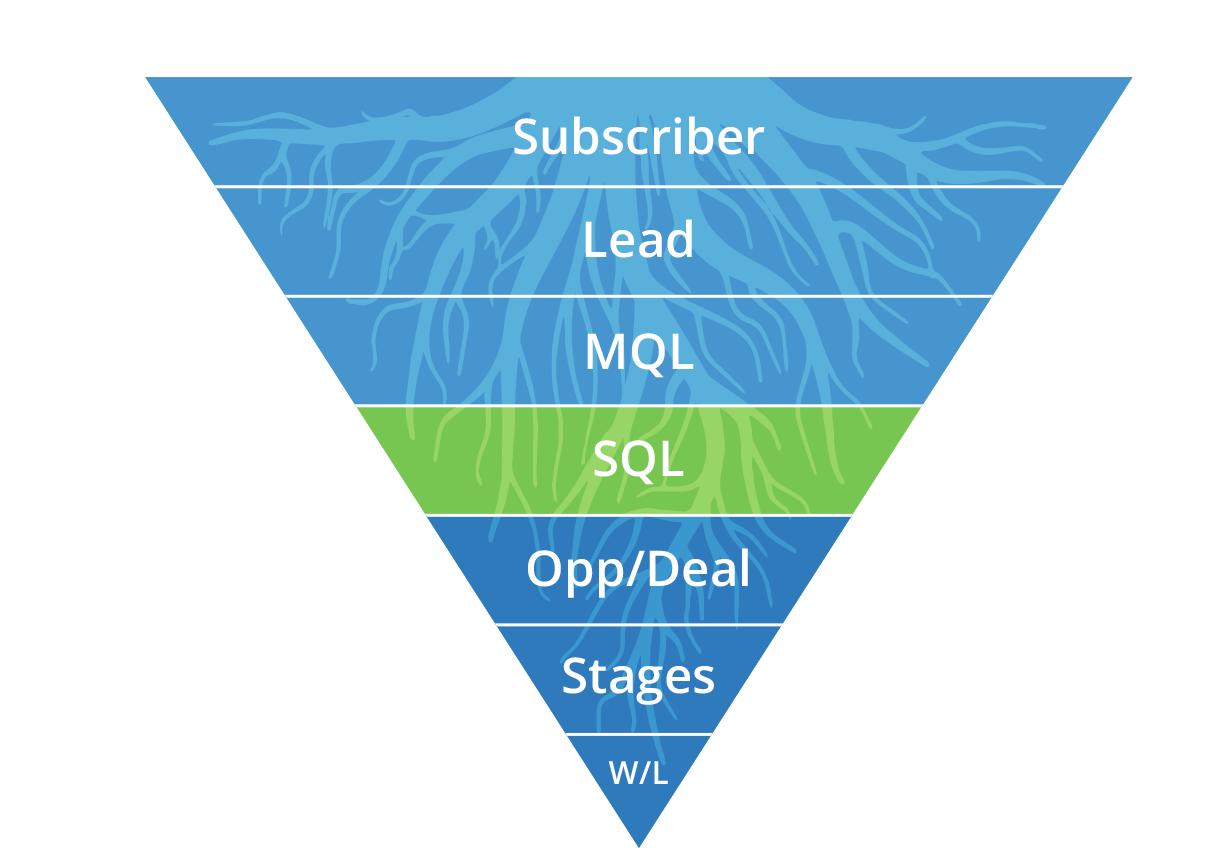
When integrating HubSpot and Salesforce, there are several options to customize the integration to suit the way your business works. With Aspirion, the main source of leads at the outset was the Definitive Healthcare database, and the decisions around syncing those contacts became a major point of discussion.
Do we just want to sync a subset of contacts and companies? Which system will we use for the reporting of which activities? Should DHC data be shared to both systems? Which data attributes should sync one-way or two-ways? Which system wins in the event of a conflict in data?
Since we had done a pretty good job of segmenting our data to begin with, we decided to sync all of the Salesforce Contacts with HubSpot. The decision on how to sync HubSpot with Salesforce was the next conversation.
Which leads being generated through HubSpot would be useful to sync with Salesforce? What makes a lead actionable for sales? After considering the options, Aspirion agreed that new HubSpot contacts should only sync with Salesforce after they had submitted a contact form or requested to speak with sales directly.
Since the target market of hospitals was already known and static (except for an occasional closure or merger) and the volume of qualified leads was expected to be low, we recommended using a streamlined 2-step approach to syncing and converting new leads.
This allowed the sales team to focus completely on their Accounts, Contacts, and Opportunities in Salesforce without having to fool with Leads or Lead conversion. Any new Leads that were generated would be manually converted by marketing into new Contacts or Opportunities on existing Contacts and assigned directly to sales.
Since most of the marketing was Contact-related, and since there was a very small amount of lead generation expected, we decided to only sync contact-level data with HubSpot in order to simplify the integration and avoid confusion.
For the few Account-level fields we wanted to pass back to HubSpot, we simply copied them down from the Account to the Contact record using a formula field, and then mapped them back to the matching HubSpot contact.
It can be a little challenging in the healthcare industry, there’s PHI and other regulations to worry about. Allen was really good at thinking through the problem and coming up with solid ways to meet the hurdles we came up against.
Whenever you first activate your CRM there’s usually no data and no segmentation, so it was important for Aspirion to implement their Salesforce CRM using the cleanest data set they could find, pulling it straight from the source. They also wanted to represent this data in a way that could be easily used and acted upon by their sales team.
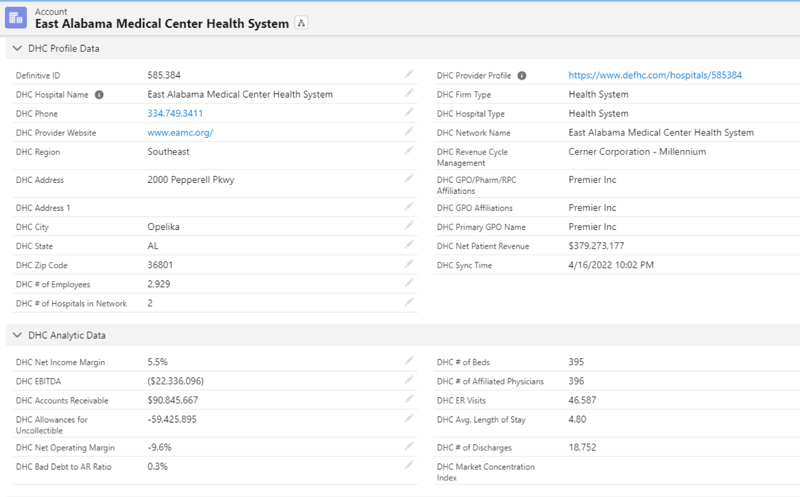
We recommended using the standard Salesforce API integration/managed package that was already available for Definitive Healthcare and then helped Aspirion narrow down the choices of all the data fields to only map what was most valuable. For example, from the hundreds of data fields available for each hospital, we chose to represent a clean and clear profile of each hospital with a generalized snapshot of their location, type, and size followed by a deeper dive into analytic metrics that were relevant for the profitability of each hospital and how Aspirion could help improve that profitability.
Aspirion also has a division that processes new Medicaid and Disability applications where patient records from client hospitals are received throughout the day. The legacy system they inherited was difficult to maintain and enhance, so they chose to implement a separate Salesforce Health Cloud which has built-in features for patient referral management and health questionnaires.
Our custom development partners, Cloud Notions, helped implement a standalone instance of Salesforce Health Cloud, along with Amazon Web Services for serverless processing of legacy FTP files. This solution processes two million records a year, and easily collects all data into "Scorecard" dashboards that can be provided to the client health systems for end-to-end visibility. They also configured custom workflow automation that reduced many of the steps that previously required human caseworkers.
For board meetings, Aspirion had been tracking their pipeline in spreadsheets that had to be tediously updated each month, so they asked us to recreate these metrics as a Salesforce Dashboard that could be automatically refreshed in real time.
The key metrics included some typical reporting such as:
However, one of the most helpful components was a recreation of the “snapshot” spreadsheet they had been using to highlight month-over-month changes in each of the pipeline categories. This helped everyone quickly notice any significant changes to the aggregate pipeline each month by each stage.
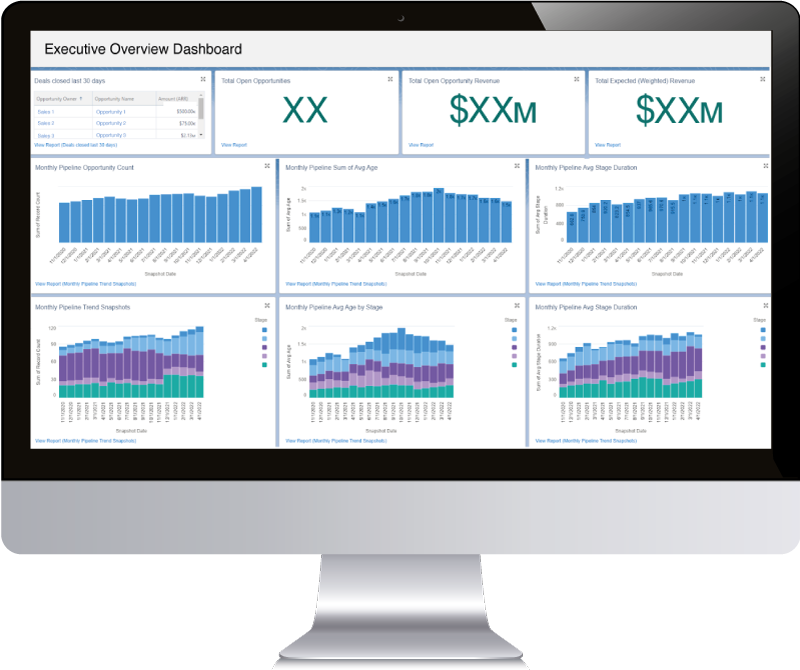
To build this, we used a combination of Salesforce snapshots and custom reporting formulas to build a single data table that compared not only the total monthly number and amount of all open Opportunities, but also changes in the number and amounts. Finally, we added some conditional formatting to highlight positive changes in green and negative changes in red.
The executives loved this dashboard and it’s refreshed and used almost daily, saving them days of manual work each month.
I use the reports and dashboards they built for us on a daily and weekly basis with my sales team, my leadership team, and during board meetings. They’re our golden standard of measurement to understand the health of the business.
This implementation of Salesforce during the formative period of their growth played a crucial part in the strategic majority investment of Linden Capital Partners in June 2022.
Key to making this successful investment happen was a foundation laid with their CRM and marketing platforms that allowed them to:
Check out our blog for more insights on aligning your marketing and sales with your CRM.
Sep 5, 2023 by Allen Helms
Have you ever paid the high price for a batch of "BANT-qualified" leads for your sales team and instead of seeing...
Mar 14, 2023 by Allen Helms
Marketing Fail #137: What the NCAA "Big Dance" Basketball Tournament taught us about excellent data that reflected poor...
Oct 7, 2022 by Allen Helms
For years, HubSpot Users have wanted full control over the default Lifecycle Stage picklist that drives so many of the...